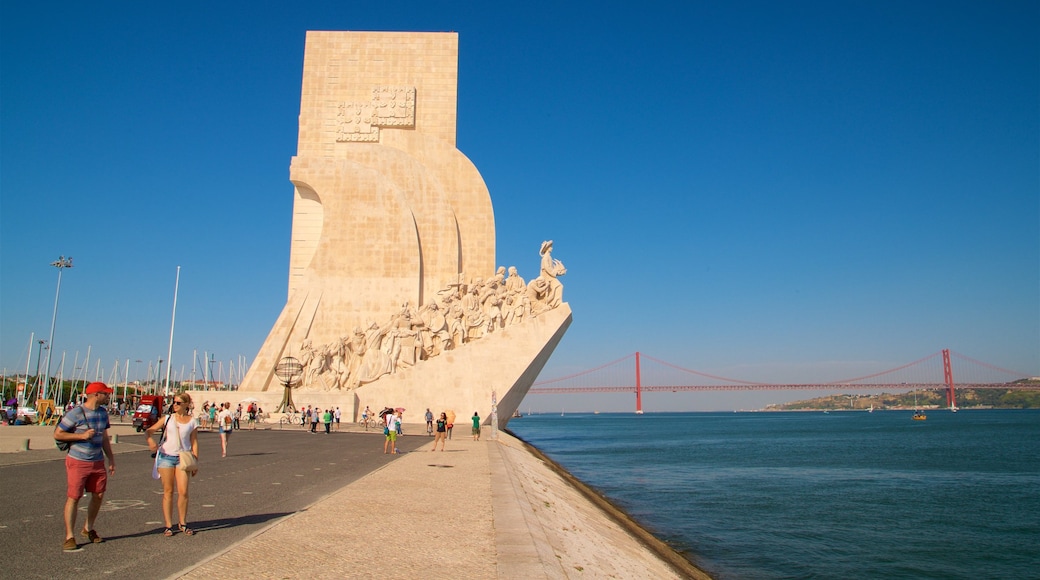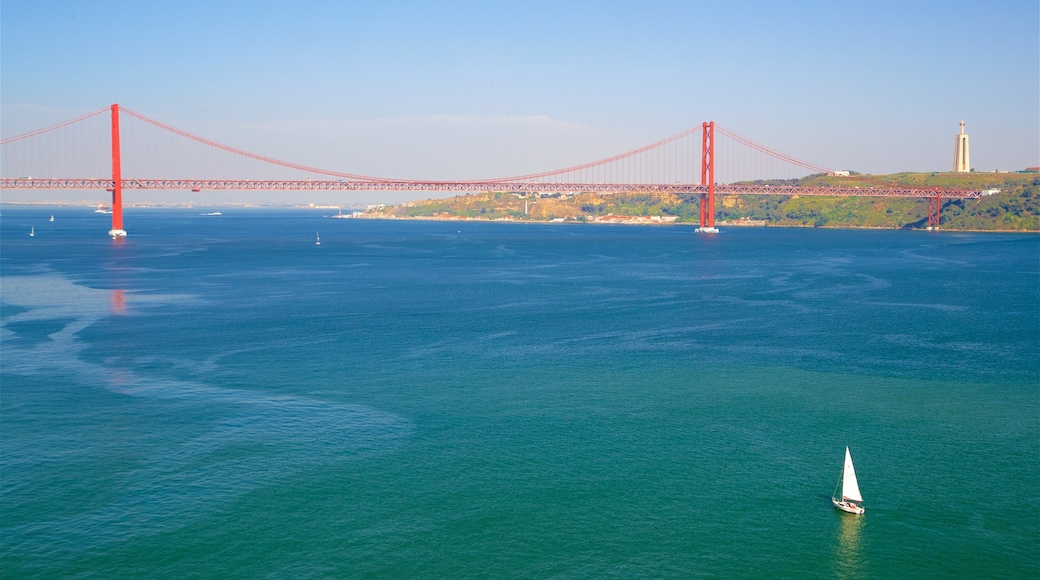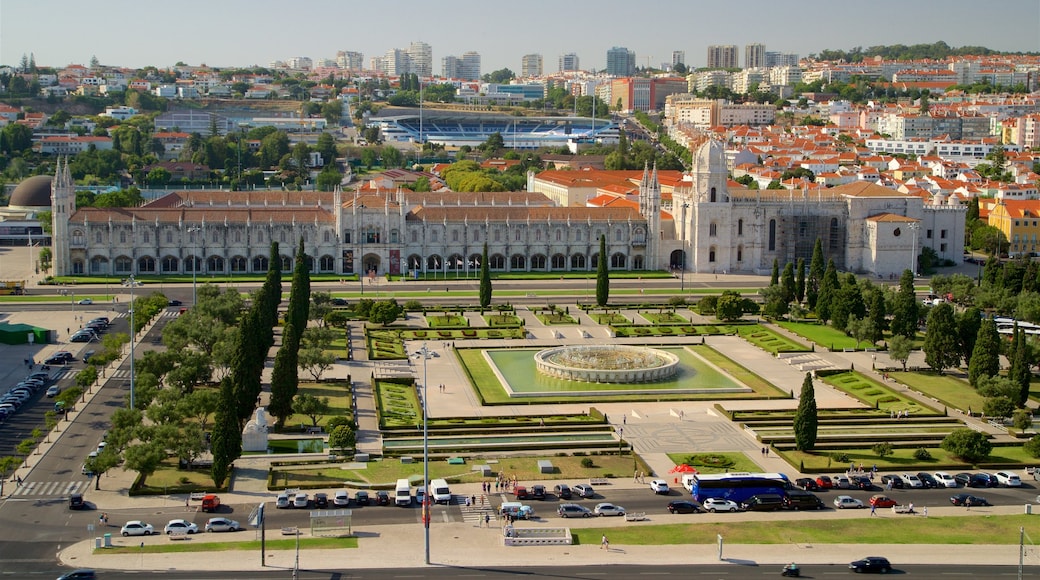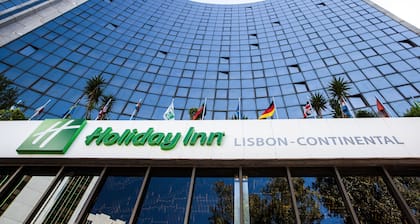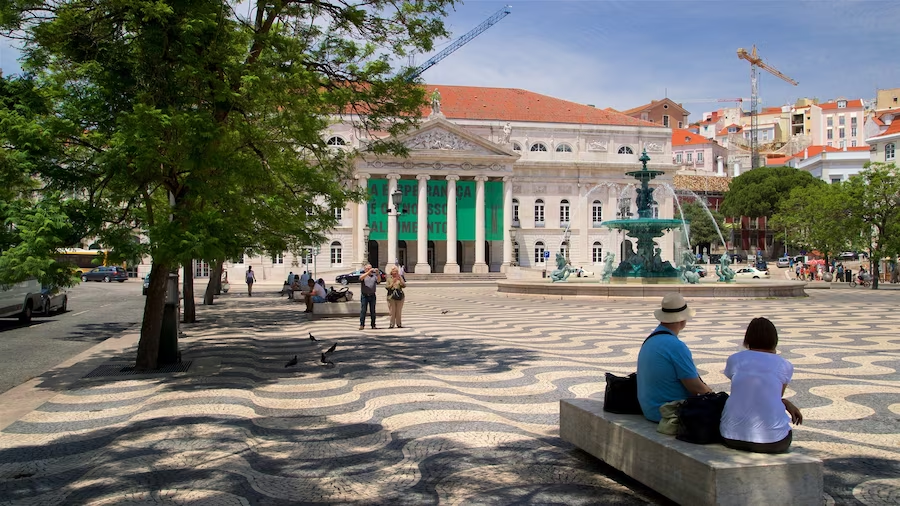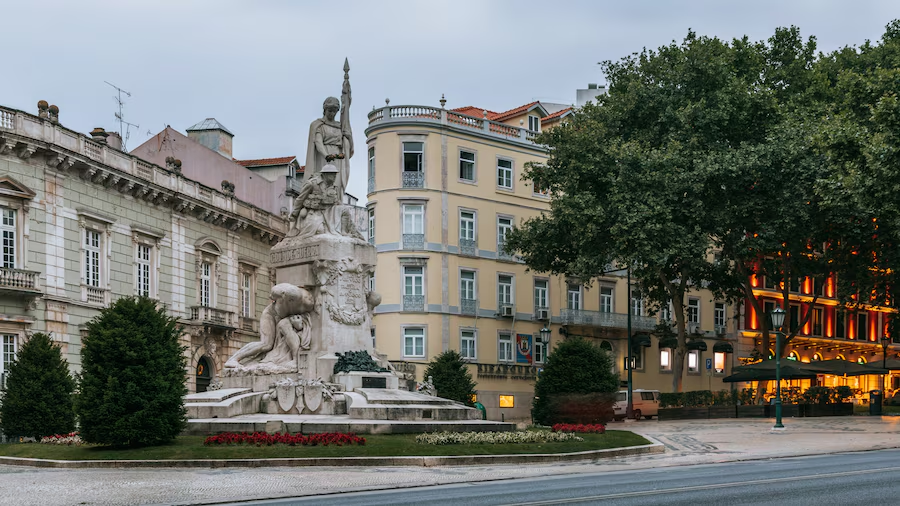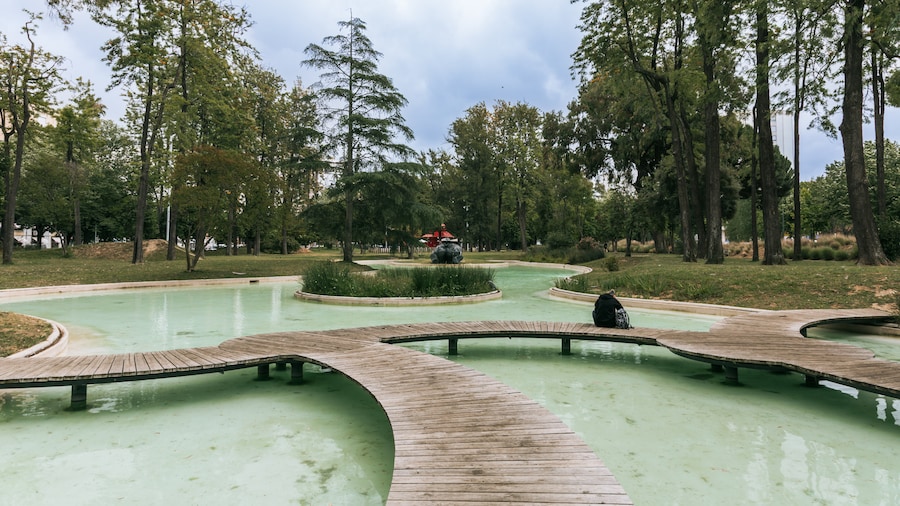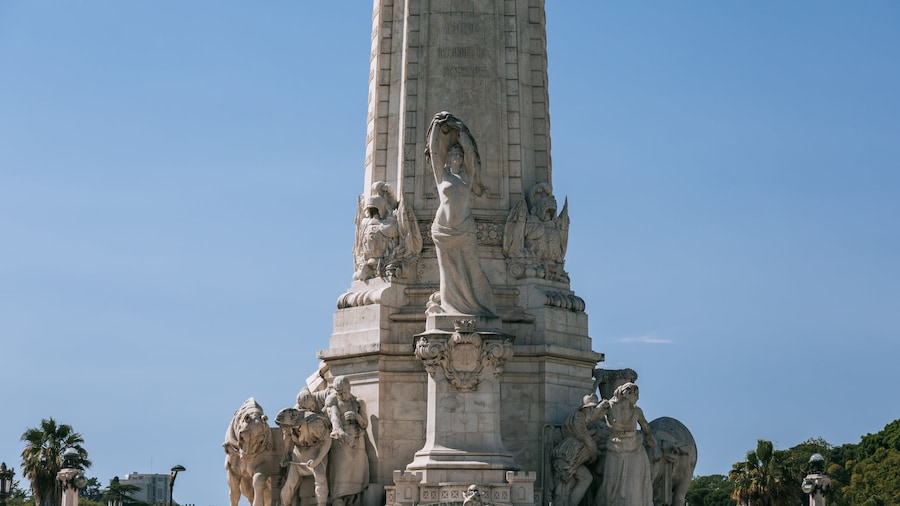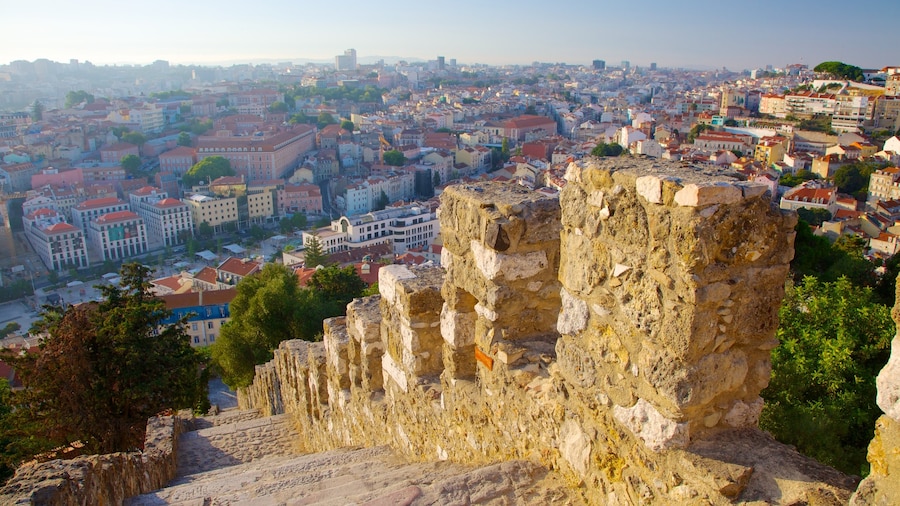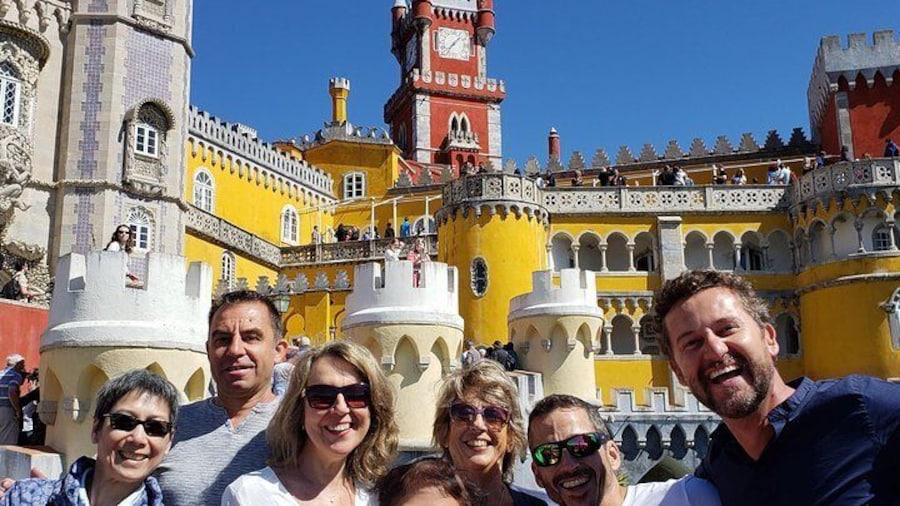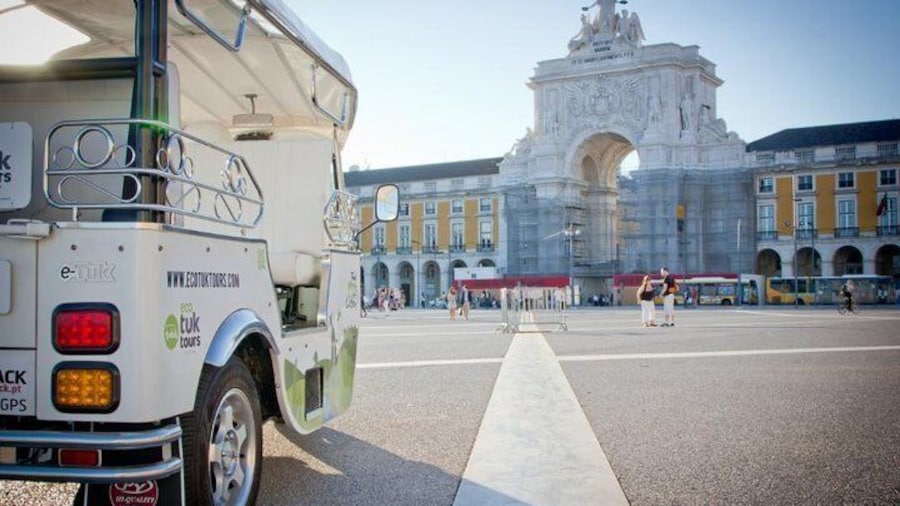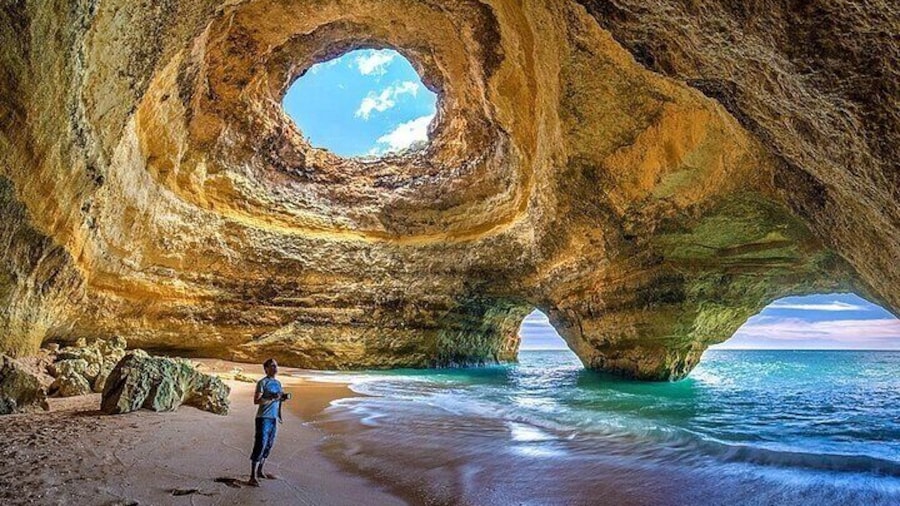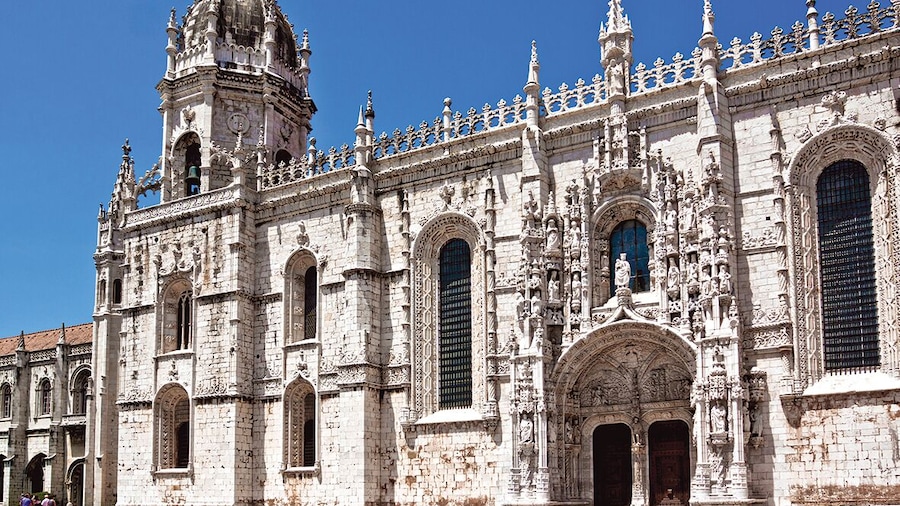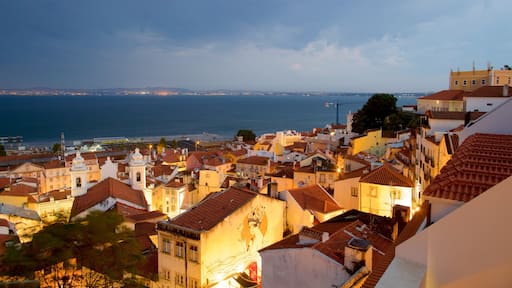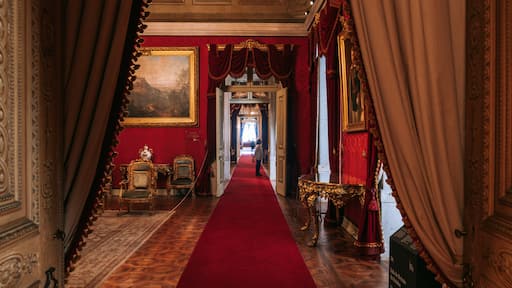Belém district defines Lisbon as a historic gateway for voyagers beginning quests for precious goods from distant lands. Hop on trams snaking through the area or walk the black-and-white tiled sidewalks known as calçadas. Belém means Bethlehem in Portuguese.
Lisbon’s history revolves around the ocean and the Tagus River, which runs past Belém. As you wander along the riverfront, notice the 25th of April Bridge. Arrive at a towering marble monument dedicated to Portugal’s seafaring importance. The Padrão dos Descobrimentos (Discoveries Monument) shows the country’s principal Age of Discovery figure Dom Henrique leading notable people toward the ocean and distant shores.
Walk beyond the monument to a small castle along the riverbank. The Torre de Belém (Belém Tower) fortification defended the area from attacks by sea.
Go inland to the Jardim da Praça do Imperio (Imperial Square Garden). Admire the magnificent fountain at the center. Look across the park at the sprawling 16th-century Mosteiro dos Jerónimos, one of the city’s most visited sites. The monastery was erected with funds from the lucrative spice industry.
Also near the park is El Centro Cultural de Belém, housing the Coleção Museu Berardo, one of Lisbon’s finest museums. Travel beyond this popular area toward downtown and look for the large pink building surrounded by trees, Belém Palace, the residence of the country’s presidents.
A short distance farther is the Museo Nacional dos Coches (National Museum of Cars) with a collection of carriages used by European royalty and popes. Try Portugal’s national pastry, the pastel de nata, first made at the beautifully blue-tiled Pastéis de Belém bakery. Lines can be long but the custardy tarts are worth the wait.
Any visit to Lisbon must include Belém. Take the tram to this area quite easily. Alternatively ride the bus, which is often less crowded and not as likely to have pickpockets.
